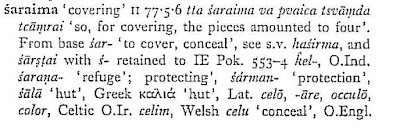If I'm right, and Arthur's father Sawyl Benisel of Ribchester had as his wife a daughter of the Irish Dal Fiatach king Muiredach Muinderg, I thought it would be interesting to take a look at where the latter had his chief court. We cannot, of course, know whether this Irish princess was Arthur's mother. But it is a distinct possibility.
Fortunately, the Irish place-name and national monument folks have done their homework. The case has been made for two rulings centers for Muiredach, both in Co. Down: Drumnabreeze and Dromorebrague. I have posted below links and excerpts from the relevant Websites.
***
Drumnabreeze, County Down
Show the Map
Origin
perhaps Ir. Dromainn Brís ‘ridge of (the) high ground’
Background
7km E of Lurgan
par: Magheralin bar: Iveagh Lower, Upper Half
Drumnabreeze was part of the O’Lavery district of Moira in 1609 (CPR Jas I 395a), and although it was let to Stephen Haven of Dromore by 1631 (Inq. Ult. (Down) §16 Car. I), Laughlin Roe O’Lawry was still resident in 1663 (Sub. Roll Down 273). It is on rising ground east of the Lagan valley, with a hill in the centre 297 feet high, from which the view ‘ranges considerably over the flat ground adjoining the Lagan’ (OSNB). The first element seems to be one of the words for ‘ridge’, droim or its derivatives dromainn or droimne. John O’Donovan suggested that the final element was brí ‘upland’ (gen. plural breg later brígh). As noted by the editor Margaret Dobbs, a name like Droim na mBrígh invites comparison with Druimne Breg ‘ridge of the high ground’, the location of Uachtar, the earliest chief site of Dál Fiatach in east Ulster (Descendants Ir xiii 324, 336, 338). However, there is no archaeological evidence for an important historical settlement in this area, and Dromorebrague in the parish of Aghaderg is a more likely location.
If the element brí is accepted, it is possible that the final [z] of the modern pronunciation is due to the addition of English plural -s, which is usually pronounced as [z] after a vowel. There are forms without -s in the Census of 1659 and the Down Subsidy Roll (1663). A plural -s has been added to this element in English spelling in other place-names, for example Mac
Muiris na mBrígh,‘MacMorris of Brees’ Co. Mayo (Misc. Ir. Annals 1406). Dean Mooney mentioned Brees Castle from Caisleán na mBrí, Brees in Clanmorris, Mayo, referred to as (is) na Brighibh hi ccloinn Muiris in 1595 AD (AFM vii 1988). Another possibility is that [z] represents the genitive ending of bríoghas, an unattested collective form of brí (cf. Ó Máille 1989-90). This would be bríos in modern spelling.
***
NOTE: There once existed a fort at Drumnabreeze. I found this information here:
The argument in favor of Dromorebrague is unsupportable, in my opinion, as one must opt for a place-name with an intrusive element (mor, 'big, great'). Drumnabreeze is, on the other hand, quite perfect for our needs.
Still, for the sake of full disclosure, the reader will find below the relevant entries on Dromorebrague and its hillfort.
***
Dromorebrague, County Down
Show the Map
Origin
Ir. Droim Mór Breá ‘big ridge of the high ground’
Background
Dromorebrague must be the townland of Shankill district called in the early 17th century Ballydromore, although it is now known locally just as Brague. There is a hill-fort at 489 feet near the north-east boundary of the parish (ASCD 148). The townland is high ground and Droim Mór ‘big ridge’ would need no explanation as the basic name of the place. The two place-names in this parish including the element brague have been understood as containing bréige, the genitive of bréag ‘a lie’, and thus having the sense of an adjective ‘false’ (Glancy 1956, 78). The term buachaill bréige ‘false lad’ was often used for a standing stone which might look like a person when seen from far off (Joyce ii 435; Ó Ceallaigh 1952-3(b) 36-7). The -brague element has also been studied by Dean Mooney. He thought that Dromorebrague derived from Droim Mór Bréagtha ‘big ridge for playing games’, where -brague represented the genitive of bréagadh, ‘deceiving’ and thence ‘beguiling’, used in this case of a hill where people once assembled to play games (Mooney 1956(a), 26-7) (Mooney MS 11). However, this would strain the meaning of bréagadh, and bréagtha would be unlikely to be anglicized brague. It is possible that -brague could represent the genitive singular or plural breagh (standard breá) of brí ‘height, plateau’, with final -gh delenited to [g] in the modern form. Dromorebrague might then be part of the district Droim Breá or Dromanna Breá ‘ridge (or ridges) of the height (or heights)’, which was the earliest settlement of Dál Fiatach in east Ulster.
On top of a hill with excellent views. The site is impressive, although some 52m of the N extent have been removed, where the bank & ditch would have been situated. The site, 71m E-W diam., stands proud of the field surface & is surrounded by an arc of waterlogged ditch running round the outside of the bank, which varies in height. At WSW, the bank is 1.25m above the interior, 5.4m wide & 2.35m above the ditch, which is 1.4m wide & 1m deep. The interior gradually slopes to N. See SM7 for further details. An archaeological evaluation was carried out on a proposed development site NE of the hillfort. Two test trenches were excavated across the development area. No artefacts or features of archaeological significance were uncovered [SOC 20/09/04].
SMR Number DOW 034:032 view on map
Edited Type: HILLFORT
Specific Type Specific Period
Townland: DROMOREBRAGUE
Council: ARMAGH CITY BANBRIDGE AND CRAIGAVON
County: DOW
Grid Ref: J1344041630
Protection: Scheduled
Parish: AGHADERG
Barony: IVEAGH UPR;UPR HALF
Town:
General Type: HILLFORT
Condition: SUBSTANTIAL REMAINS (Vast majority definable)
General Periods:
Submit
IRON AGE
PREHISTORIC




































